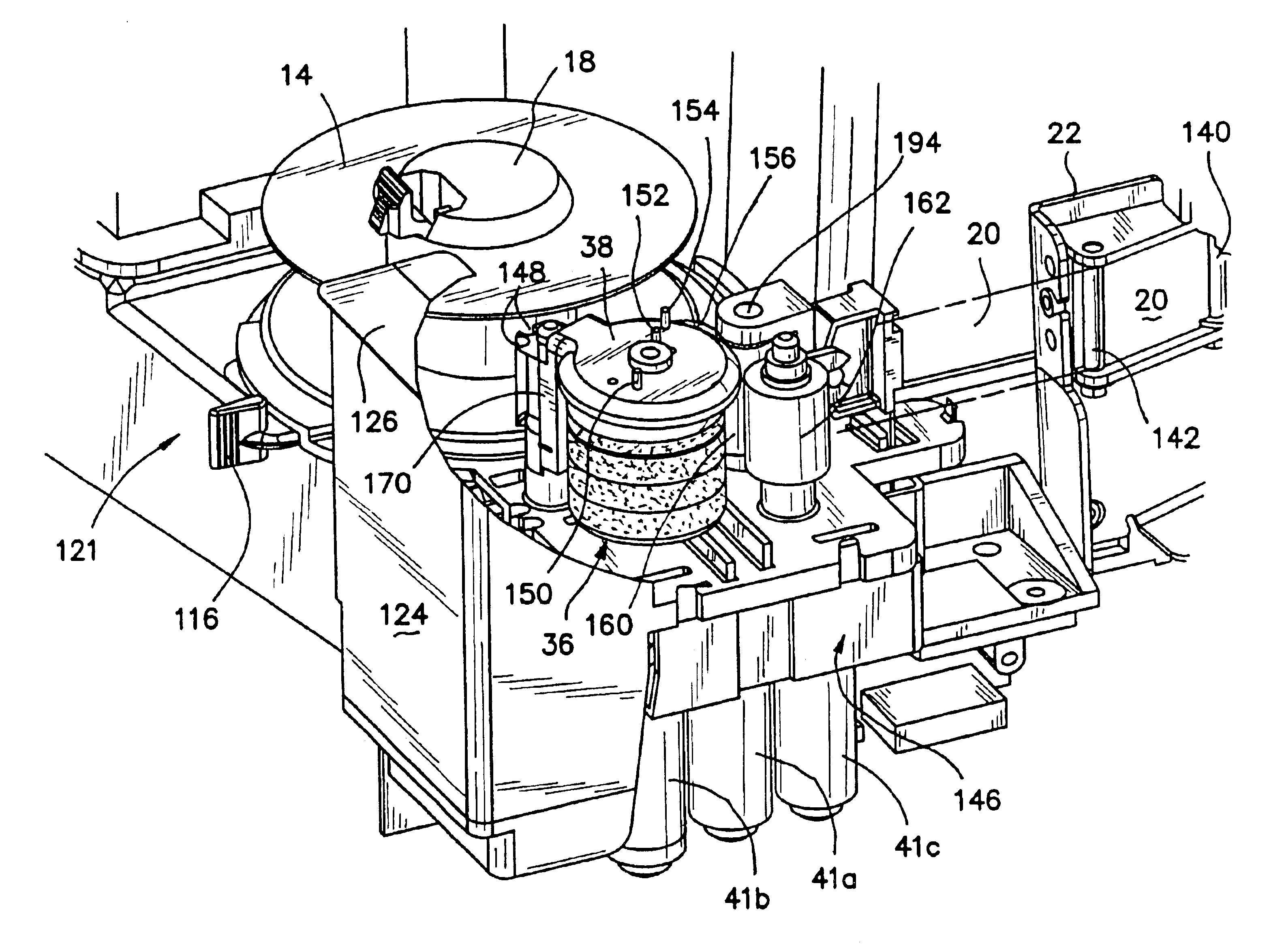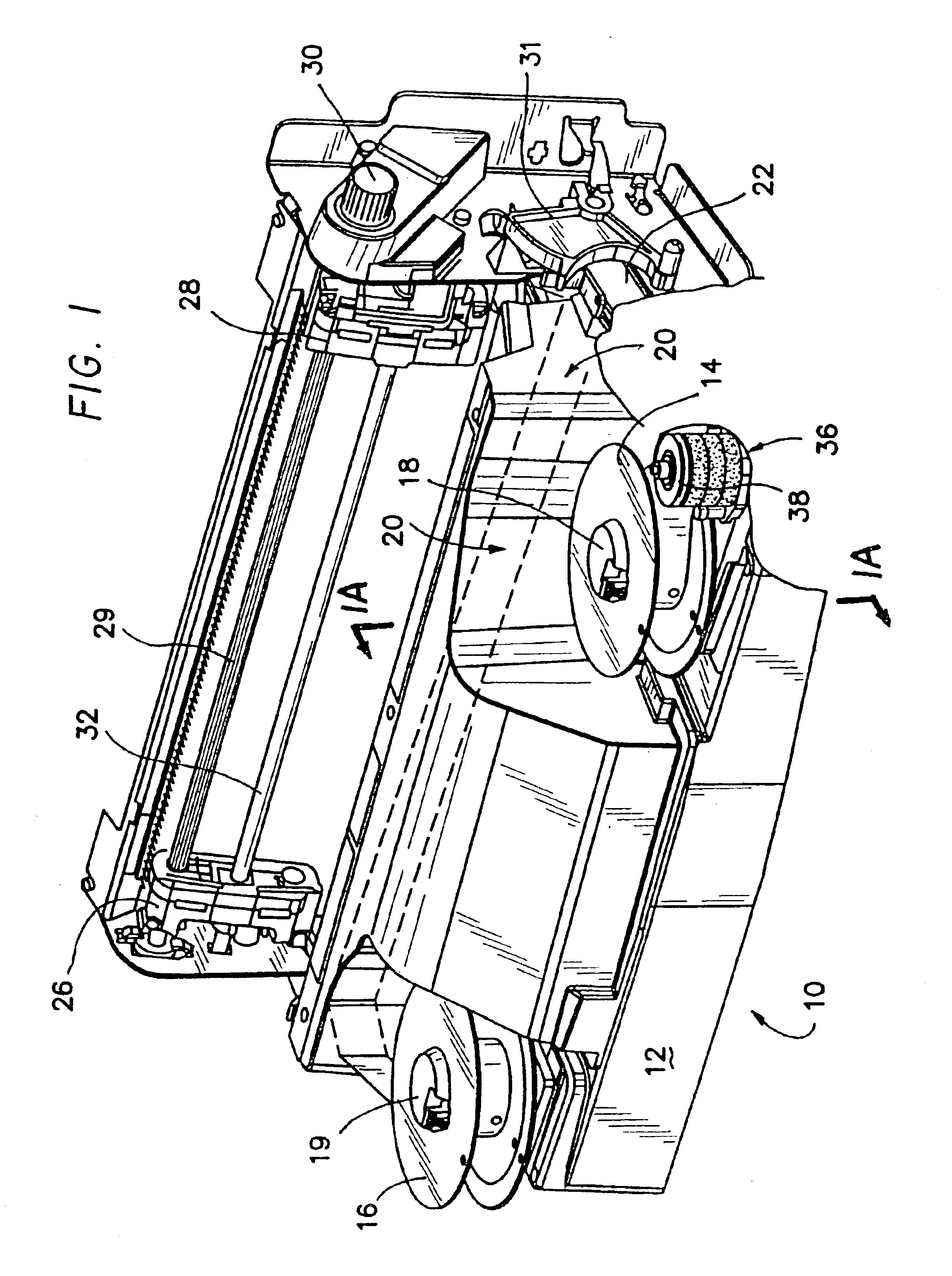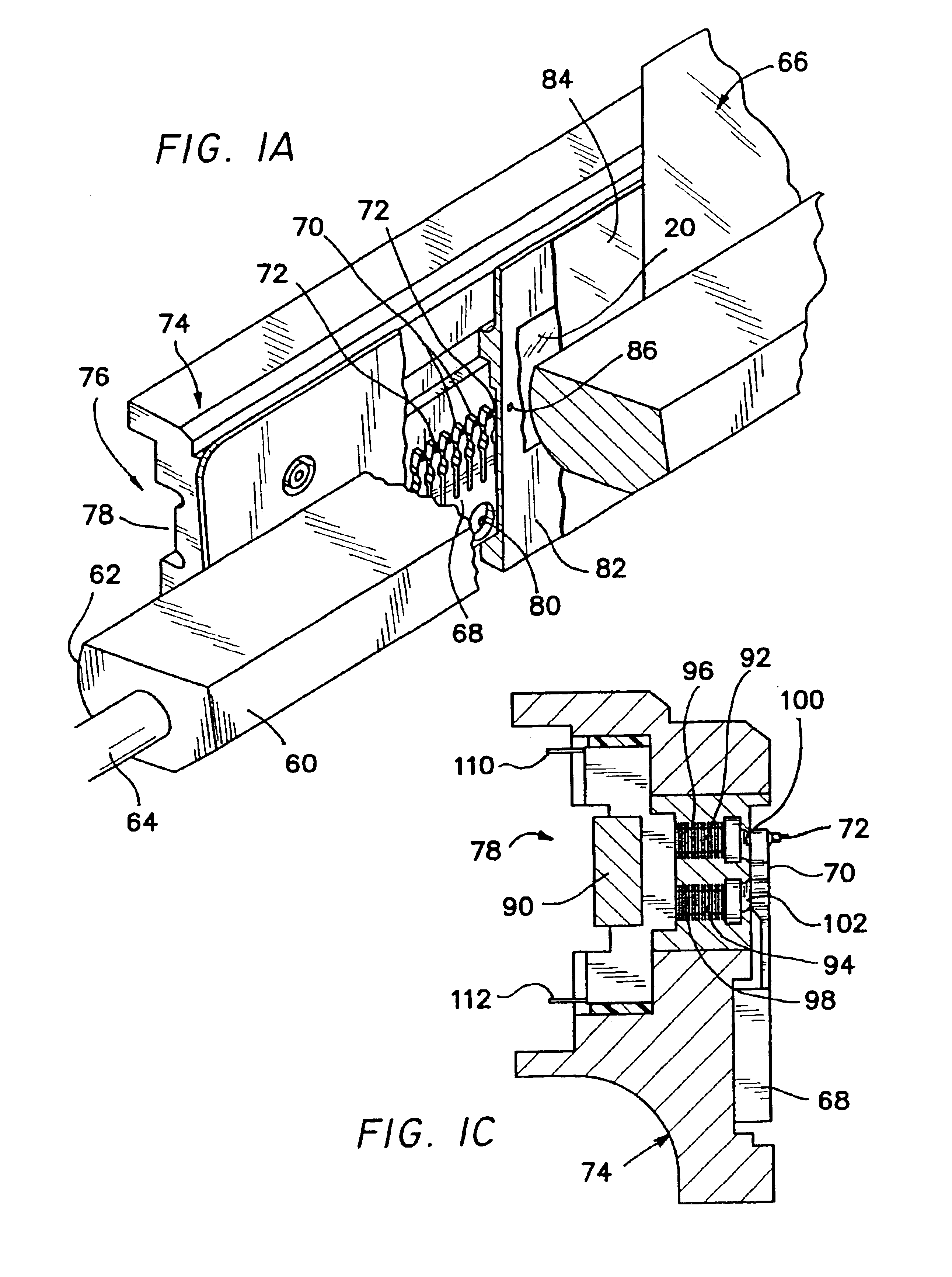Constant density printer system
a printer system and constant density technology, applied in the field of impact printers, can solve the problems of hammer tips striking against inked ribbons, affecting the effect of print quality, and complicated arrangement, so as to improve print quality, reduce the “apparent viscosity", and reduce the effect of viscosity
- Summary
- Abstract
- Description
- Claims
- Application Information
AI Technical Summary
Benefits of technology
Problems solved by technology
Method used
Image
Examples
Embodiment Construction
[0067]FIG. 1 shows a perspective view of this invention in the form of an impact line printer 10. The impact line printer 10 can be mounted on a stand, a base, or can be free standing in a cabinet. In this particular case, the line printer 10 has been shown in a configuration with respect to the operating elements and none of the appurtenant support material or devices.
[0068]The line printer 10 has a base 12 which mounts a pair of ink ribbon spools 14 and 16. The ribbon spools 14 and 16 are emplaced upon hubs or spindles 18 and 19. The hubs 18 and 19 have spring loaded catches which tend to secure the ribbon spools onto them for driving purposes.
[0069]The ribbon spools 14 and 16 provide for the traversal of a ribbon 20 which is shown in dotted configuration. The ribbon 20 traverses at a slight angle in order to accommodate the ribbon passing and being struck at various portions as it traverses over the hammerbank in the manner set forth hereinafter.
[0070]The ribbon 20 shown in the d...
PUM
 Login to View More
Login to View More Abstract
Description
Claims
Application Information
 Login to View More
Login to View More - R&D
- Intellectual Property
- Life Sciences
- Materials
- Tech Scout
- Unparalleled Data Quality
- Higher Quality Content
- 60% Fewer Hallucinations
Browse by: Latest US Patents, China's latest patents, Technical Efficacy Thesaurus, Application Domain, Technology Topic, Popular Technical Reports.
© 2025 PatSnap. All rights reserved.Legal|Privacy policy|Modern Slavery Act Transparency Statement|Sitemap|About US| Contact US: help@patsnap.com



